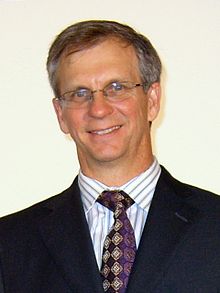Alan Eustace is a trained computer scientist and served as the Senior Vice President of Knowledge at Google. In 2014, he made the highest-altitude free-fall jump from the stratosphere wearing only a space suit. He is now working on problems related to renewable energy, health care, and transportation.
When you approach a problem that feels unsolvable, what is your process?
The first step is research. Just reading a lot about what has been done and understanding the issues that arose in previous attempts. It’s a lot of going to the library and talking to people. The second piece is developing an insight that will give you an edge. The last is to follow that insight. You find the experts in the field and get feedback about whether your idea has merit or not and if it does you build a team around it. Nothing can be done by a single person anymore.
What was the insight that inspired your free fall?
Everybody prior to me had used some form of [a] capsule to get into the stratosphere [but] I just fundamentally thought capsules were a bad idea. That came out of [my] research. The very first jump Joe Kettinger did, he had issues exiting the capsule. Because the seat pack he was wearing had a different expansion coefficient than the seat, as he got higher in the stratosphere, he got trapped. In trying to exit, he triggered a timer that prematurely released his parachute. The parachute wrapped around his neck and he lost consciousness as a result. He was saved, luckily, by an emergency parachute that was automatically activated. It just begged the question, if you have a space suit on that is supposed to protect you from the environment, what is the purpose of a capsule? So I asked, what would happen if I got rid of the capsule? Could I build a scuba diving like system for the transfer and make the process fast, cheaper, and safer?
As technology pushes the boundaries of what is possible, and space becomes more accessible what implications do you think this has for life on earth?
When I was growing up, all spaces exploration was done by NASA, but now there is a commercial space industry. Inside NASA, a very small team, less than a dozen people, developed a brilliant strategy to incentivize a commercial space effort. They took on a few companies and allowed them to build plants and helped them develop their projects. If the companies could make the milestones, NASA funded their efforts, essentially jumpstarting the entire industry. Now there are dozens of companies building launch vehicles that can get things into space. The potential is limitless — this is the golden age of broad-based science communication and business.
Do you foresee any unintended consequences of the new technology?
The positives outweigh the negatives because of the scientific potential. The thing about space is that it blurs distinctions among countries. At Google, because we were collecting imagery of the entire world, we were able to track deforestation and pinpoint exactly where trees were falling. In terms of global warming, we were able to measure the temperature of every single glacier on Earth. None of this would have been possible without innovations in space exploration, because hundreds of governments would never [have] been able to agree to send people on the ground to collect this data. Spaces holds the promise that it is not about countries, that it is about capabilities.
